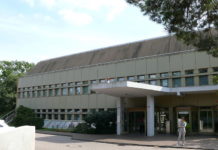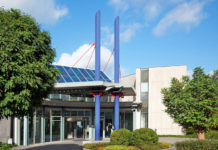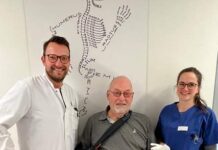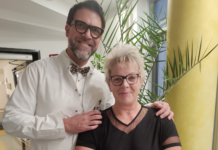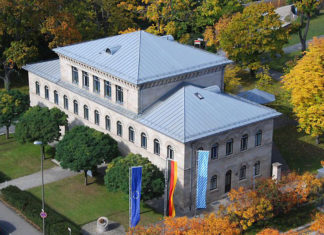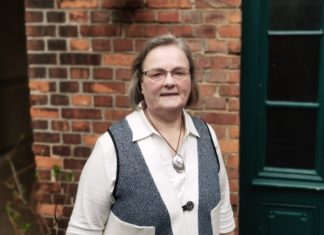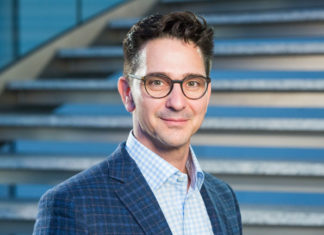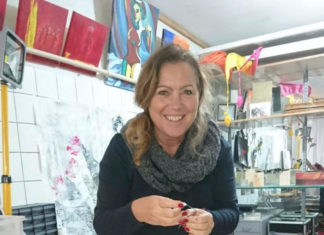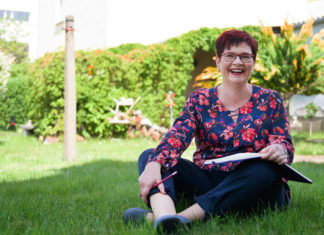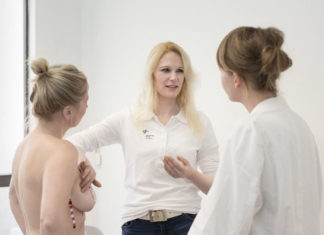
The shock is big when diagnosing breast cancer. Fortunately, the chances of recovery are now very good, since doctors have a whole arsenal of treatment options to defeat the cancer.
The goal of any therapy or combination therapy in breast cancer is the same: cancer cells should be killed holistically, so that a renewed flare is prevented. In advanced stages, however, it is more about maintaining patients quality of life. Many German oncologists specialize in fighting against breast cancer and some hold a very good reputation worldwide, so that Russian or US patients can be treated in Germany.
Diagnosis: From mammography to biopsy
Optimal treatment of breast cancer varies from patient to patient. At the beginning of a therapy, it’s a must to first find answers to: how big is the tumor? Where exactly is it? What do its cells look like on the surface? At what speed does it grow? In order to answer these questions, doctors in Germany use different examination methods.
Mammography
Doctors take X-rays in order to make small non-palpable nodules in the breast that visible. Thus, they can see whether epithelial cells which line the milk ducts of the breast have mutated.
Ultrasound
If the X-ray image shows any abnormalities, an ultrasonic examination can be done. The tissue, the fluids and the torso have different densities and are thus reflected differently by the ultrasonic waves. Bones are displayed in white, fluids in black and the density of tissue is displayed in greyscale. With an ultrasound device, the doctor can for example determine whether the nodule is a cyst filled with liquid or a tissue node.
Magnetic Resonance Imaging/MRI
Especially for young women with a very dense mammary gland tissue, an additional magnetic resonance imaging (MRI) may be necessary. It is based on a strong magnetic field which influences the nucleus of the water atoms in the body. As 70% the human organism is water, water atoms are available almost everywhere, also in the breast. Healthy and mutated tissue often have a different hydrogen content. Therefore, the doctor is able to gain information about the location and the size of the tumor thanks to this diagnostic method.
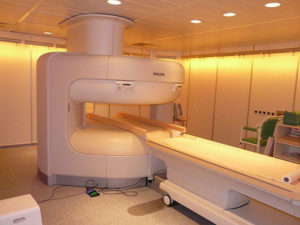
Biopsy
A biopsy provides definite clarity whether a tissue mutation in the breast is benign or malignant. Biopsies can usually be carried out with a cannula under local anesthesia. In rare cases, the doctors use a surgical biopsy.
Depending on the development of the disease, further procedures are applied in order to determine the degree of the disease, such as galactography (X-ray examination of the milk ducts), thermography (thermal image) or computer tomography (CT).
Breast cancer treatment
Luckily for a majority of patients today, a breast conserving surgery is possible. Even if the breast needs to be removed, there are several ways to reconstruct it. For example, silicone implants can be used permanently or the breast is rebuilt with the body’s own tissue.
What does one do in Germany if breast cancer has been diagnosed? The surgical removal of the tumor is always performed in Germany in a hospital. Therefore, it is important to first of all to select a suitable hospital. After surgery, additional breast irradiation is usually performed to reduce the risk of relapse in the remaining tissue. In addition, it is known today that the intake of medication has a positive effect. With all these follow-up treatments, the patients are free whether they want to be treated as outpatients in the hospital or visit a private specialist. Only the operation takes place in the hospital.
Chemotherapy
Before surgery, a chemotherapy can be used to decrease the size of the tumor. Sometimes, it is not necessary. Chemotherapy consists of a combination of drugs which are administered intravenously as an injection or as tablets. The drugs are supposed to influence directly the growth of the malign tumors. Usually, chemotherapy is carried out in a doctor’s practice or in the hospital as an out-patient. Only in exceptional cases, the patient will be hospitalized for chemotherapy.
Surgery
For most patients, a breast-conserving surgery is possible today. However, this is always followed by radiotherapy, because otherwise the treatment wouldn’t be equal to a breast removal. If the breast is removed, there are different procedures for reconstruction. For example, silicone implants can be implanted permanently or the breast is reconstructed using endogenous tissue.
A distinction is made between breast-conserving surgery and mastectomy. In a breast-conserving surgery, the tumor in the breast and a small part of the surrounding tissue is removed. In a total mastectomy, the whole breast is removed.
During the surgery, the doctors usually also remove lymph nodes which are located on the lymphatic vessels and act as filters. If the tumor spreads in the body through the lymphatic vessels, it would initially take root on the so-called sentinel lymph nodes, those lymph nodes that are closest to the tumor. When examining the removed lymph nodes, the doctors can see whether the tumor cell has spread and plan the therapy accordingly.
Radiotherapy
Breast-conserving therapy is usually followed by additional radiation of the breast to reduce the risk of a relapse in the remaining tissue. The radiation is aimed directly at the former tumor bed in order to damage the RNA of the cells, causing them to die.
Hormone Therapy
If cancerous cells have hormone receptors, they subsist on the natural female hormones estrogen and progesterone. To hinder the growth of the tumor, doctors use endocrine therapy. The choice of medication and the doses depend on the age of the patient and the type of the tumor. The majority of women have a tumor with hormone receptors. That means that hormones such as estrogen influence the growth of the tumor. The release of estrogen can be regulated using certain drugs such as tamoxifen.
Immunotherapy
Cancer cells are recognized by the immune system, if they are damaged or carry features on their cell surface, that distinguish them from healthy cells. These features are called tumor-associated antigens (TAA). If no tumor-associated antigens are present in the cancer cell, the immune system recognizes the tumor tissue as normal tissue and treats it accordingly. In immunotherapy, the cancer cells are exposed by the doctor of the patient, injected with artificial antibodies that bind to the cancer cells.
So many patients were treated for breast cancer in German hospitals in 2018
Clinic or private specialist?
Breast cancer surgery in Germany is always performed in a hospital. It is recommended to choose a clinic in which the doctors have sufficient experience. Here you can read an interview with Prof. Dr. med. Kümmel, at whos breast center in Germany most patients are treated for breast cancer. In addition to the experience of the treating doctors, it is important that all medical specialties involved in diagnostics and therapy are represented in the clinic. Being on the safe side come with choosing a hospital with a certified breast center. The certification is awarded by the German Cancer Society only to those clinics that offer the highest technical and personnel standards.
Even, if therapy after the surgery can theoretically be performed by a general practitioner, it is advisable for patients from abroad not to change the doctor. Because the clinicians already know the clinical picture and you do not have to explain it again laboriously to a new doctor. Chemotherapy or hormone therapy can also be done on an outpatient basis, meaning that you visit the hospital only for follow-up visits or when you are given medication intravenously.
Costs for patients from abroad
The treatment of breast cancer varies from patient to patient, so you can not say in advance what the costs are. It is possible that only a small tumor in a breast is removed and not even radiation is necessary after that. Then the expenditure remains comparatively small. If a larger operation is performed and the subsequent therapies are expensive, the costs increase.
As a rule, foreign patients pay the same prices as German patients. No matter if you’re in the hospital or in a private practice. Because the billing depends on the statutory cost catalogs. When individual services are added, such as a chief physician treatment or a single room, the prices increase. Explicitly for foreign patients, there come costs for travel, translation and accommodation.
Suppose a patient, has a breast infested with a malignant tumor and a major operation is necessary. The patient has already passed the menopause, the estrogen production of the ovaries is low. Therefore, the ovaries do not need to be removed. The treatment of this patient would take an average of 5.6 days and costs 4,673 euros. It is billed according to the case flat rate J23Z, which is the most frequently charged case lump sum in breast cancer patients. However, only the costs incurred during the time in the hospital are recorded here. The follow-up and preliminary examinations are extra calculated and differ from case to case.
Cost allocation for the treatment of breast cancer in the hospital
How to contact a German hospital
To find out how expensive your treatment will be, send your medical documents to the German hospital, preferably in German or English. Depending on whether you only want a diagnosis or already a treatment, the hospital prepares a cost estimate. Already before arrival, you pay the amount stated in the estimate as a down payment. Upon receipt of the payment, a joint treatment plan will be prepared and the case manager of the hospital will send you the necessary documents, to apply for a visa. Our tip: ask at least two hospitals to compare the costs.






